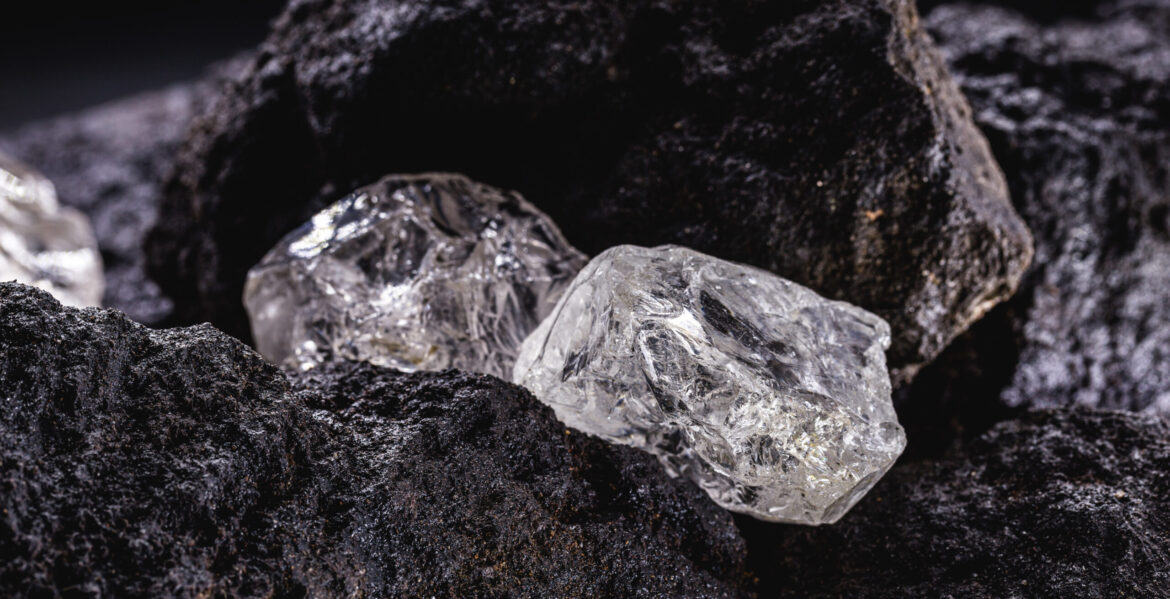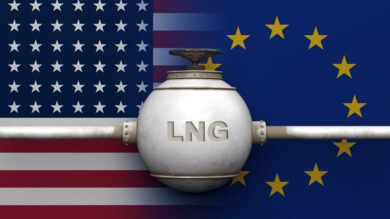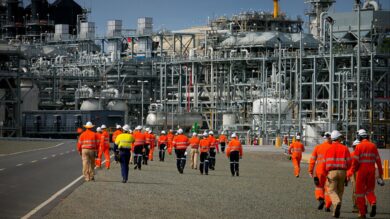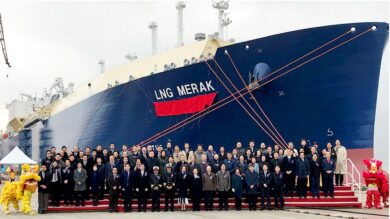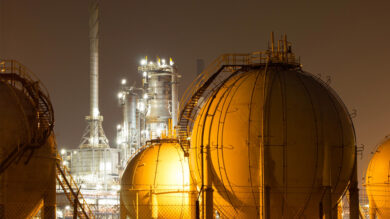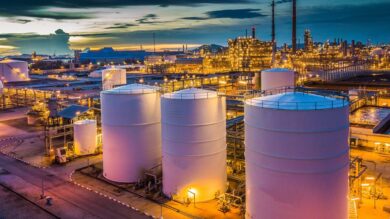The Role of Critical Minerals in Clean Energy
Countries accounting for more than 70% of today’s global GDP and emissions have committed to net-zero emissions, implying a massive acceleration in clean energy deployment.
The types of mineral resources used vary by technology. Lithium, nickel, cobalt, manganese and graphite are crucial to battery performance, longevity and energy density. Rare earth elements are essential for permanent magnets that are vital for wind turbines and EV motors. Electricity networks need a huge amount of copper and aluminium, with copper being a cornerstone for all electricity-related technologies.
The shift to a clean energy system is set to drive a huge increase in the requirements for these minerals, meaning that the energy sector is emerging as a major force in mineral markets. Until the mid-2010s, for most minerals, the energy sector represented a small part of total demand. However, as energy transitions gather pace, clean energy technologies are becoming the fastest-growing segment of demand. In a scenario that meets the Paris Agreement goals (as in the IEA Sustainable Development Scenario [SDS]), their share of total demand rises significantly over the next two decades to over 40% for copper and rare earth elements, 60-70% for nickel and cobalt, and almost 90% for lithium. EVs and battery storage have already displaced consumer electronics to become the largest consumer of lithium and are set to take over from stainless steel as the largest end user of nickel by 2040.
An energy system powered by clean energy technologies needs significantly more minerals, notably:
- Lithium, nickel, cobalt, manganese and graphite for batteries,
- Rare earth elements for wind turbines and electric vehicles motors,
- Copper, silicon and silver for solar PV,
- Copper and aluminium for electricity networks,
- There is no shortage of mineral resources, but recent price rises for cobalt, copper, lithium and nickel highlight how supply could struggle to keep pace with the world’s climate ambitions.
What are critical minerals?
Critical minerals are minerals that are essential to modern-day technologies, including renewable electricity, batteries, electronics, and electric vehicles. What is defined as a critical mineral is usually determined by the mineral’s strategic importance to a country, as well as the availability of supply, the demand, and the existence of viable substitutes. The list of critical minerals varies by country.
Global demand for critical minerals and the products they are manufactured into is likely to increase significantly in coming decades. The International Energy Agency estimates that, in response to global efforts to reach the climate goals of the Paris Agreement, mineral demand for clean technologies will increase by two to six times by 2040, when compared to 2020.
While all countries require some critical minerals, production (mainly mining and processing) is concentrated more in some countries than in others. For example, in 2020, China produced 57% of global aluminium, while the Democratic Republic of Congo produced 67% of cobalt. Chile produced 28% of copper, Australia 48% of lithium, and Canada 31% of potash.
Demand for critical minerals is set to soar over the next two decades as the world pursues net zero goals. Overall requirements rise by as much as 6 times, but individual minerals, led by lithium, rise even faster.
“An energy system powered by clean energy technologies differs profoundly from one fuelled by traditional hydrocarbon resources. Building solar photovoltaic (PV) plants, wind farms and electric vehicles (EVs) generally requires more minerals than their fossil fuel-based counterparts. A typical electric car requires six times the mineral inputs of a conventional car, and an onshore wind plant requires nine times more mineral resources than a gas-fired power
plant. Since 2010, the average amount of minerals needed for a new unit of power generation capacity has increased by 50% as the share of renewables has risen. The types of mineral resources used vary by technology. Lithium, nickel, cobalt, manganese and graphite are crucial to battery performance, longevity and energy density. Rare earth elements are essential for permanent magnets that are vital for wind turbines and EV motors. Electricity networks need a huge amount of copper and aluminium, with copper being a cornerstone for all electricity-related technologies. The shift to a clean energy system is set to drive a huge increase in the requirements for these minerals, meaning that the energy sector is emerging as a major force in mineral markets. Until the mid-2010s, the energy sector represented a small part of total demand for most minerals. However, as energy transitions gather pace, clean energy technologies are becoming the fastest-growing segment of demand.
In a scenario that meets the Paris Agreement goals, clean energy technologies’ share of total demand rises significantly over the next two decades to over 40% for copper and rare earth elements, 60-70% for nickel and cobalt, and almost 90% for lithium. EVs and battery storage have already displaced consumer electronics to become the largest consumer of lithium and are set to take over from stainless steel as the largest end user of nickel by 2040.”
(Source of he above information: IEA. All rights reserved. International Energy Agency Website: www.iea.org).
For a full report ” The Role of Critical Minerals in Clean Energy Transitions” issued by the International Energy Agency, click on this link.
The following information is courtesy of Kuczera, L., and Heyck-Williams, S. 2022. Critical Minerals for Clean Energy Reference Guide, Washington, D.C.: National Wildlife Federation.
Wind and Solar
Domestic wind power deployment has increased significantly over the past decade thanks to policy support and decreasing costs. As large-scale wind projects are announced and underway, materials like aluminium, copper, zinc, and rare earth elements (a group of 17 soft heavy metals) will be increasingly needed to build turbines, and copper will be needed for cabling. Mineral needs vary by turbine type and size. For example, the offshore wind market prefers lighter and more efficient turbines that require rare earth elements—specifically neodymium and praseodymium—of which demand will more than triple by 2040.4 Onshore wind, however, does not require as much volume of rare earth elements because these turbines typically use gearbox generators rather than the permanent magnets that are preferred offshore. Onshore wind may also favour using aluminium for cabling rather than copper needed for submarine cabling. Solar photovoltaics (PVs) are a rapidly growing market that has increased in size nearly 20 times over the past decade. The expected solar energy capacity additions by 2040 forecast a potential tripling of copper demand. Solar power will require high volumes of aluminium and copper and low volum
als. Electric Vehicles and Batteries Electric vehicles and battery storage will make up about half of the growth in mineral demand for clean energy over the next twenty years. Demand for graphite, copper, nickel, lithium, and cobalt will therefore rise substantially. Different chemistries of lithium-ion batteries have become available for electric vehicles. However, 90 percent of EVs marketed today require rare earth elements like neodymium, praseodymium, dysprosium, and terbium, which are concentrated and processed in China. Like many technologies, raw materials account for the majority of EV battery cost. Despite becoming more affordable over the years, the fluctuating price of critical minerals can greatly affect battery price. Security in cost and supply chain of minerals essential to electric vehicle battery manufacturing is paramount in achieving electrification targets.
Geothermal
Although geothermal only accounts for a small portion of the United States’ electricity generation, the U.S. still leads the world in geothermal power generation capacity. Geothermal systems use nickel, chromium, molybdenum, and titanium, and account for 80 percent of nickel demand and 40 percent of titanium demand of all low-carbon power sources.5 Current geothermal energy capacity in the U.S. is less than 1 percent but has the potential to grow to more than 8 percent by 2050.
Hydropower, Bioenergy, and Nuclear
Hydropower, bioenergy, and nuclear energy all have low mineral intensity. Hydropower and bioenergy are expected to account for around two percent of total U.S. demand for copper from low-carbon power sources by 2040, while nuclear is expected to account for less than six percent of copper, nickel, and chromium demand.
Foreign and Domestic Supplies
Certain clean energy minerals are concentrated in just a few countries, making the current international supply chains for them vulnerable to political instability, price volatility, and export restrictions. Other events such as natural disasters, accidents, and labor strikes may also cause supply disruptions. For example, in the summer of 2021, as high commodity price and demand accelerated for metals used in renewable energy and electric vehicles, labor strikes in Chile, Canada, and the U.S. led to production declines and supply disruption.6 Similarly, the output of refined copper in the United States decreased by an estimated 13% as a result of strikes, ongoing since October 2019, at a smelter in Arizona and an electrolytic refinery in Texas.
Cobalt
The Democratic Republic of the Congo (DRC), Australia, and Russia are the top cobalt-producing countries. With only a few known domestic deposits of cobalt, the U.S. is heavily dependent on imports, with the majority imported from Norway, Canada, Japan, and Finland. Particular concerns from cobalt-producing countries like China, Russia, and the DRC revolve around their geopolitical instability and questionable labor and environmental laws. Negative impacts of cobalt mines in the DRC include heavy metal contamination of air, water, and soil, severe health impacts for miners and nearby communities, use of child labor, and dangerous working conditions in small-scale hand-dug mines.
Building a clean energy grid will involve the expansion of transmission lines that require large amounts of copper for underground and subsea cables and aluminium for overhead lines. Switching to aluminium for more underground lines would decrease pressure for copper and provide a more affordable grid expansion. Nevertheless, wherever possible, clean energy technologies should be built near existing and upgraded electricity grids and those transmission lines repurposed for renewables.
Lithium
Australia, Chile, China, and Argentina are top producers of lithium. In 2018, the U.S. relied on imports for more than 50% of lithium consumed. The major environmental and social concerns of lithium mining are water contamination and poor worker compensation. Lithium is found around the world, but few places have large deposits. Numerous deposits in the American West and South exist, such as the Clayton Valley brine operation in southern Nevada and the Smackover brine area of Arkansas. One of the largest deposits in the world can be found in eastern Oregon, which is also home to an assortment of critical high desert species. Therefore, thoughtful consideration for lithium mine siting must be taken to ensure wildlife and communities are not affected.

Petalite or castorite is an important mineral for obtaining lithium, battery industry, lithium source
Almost all of the known deposits in the U.S. overlap with high-value fish and wildlife habitats, such as the Boundary Waters in Minnesota and the Klamath and Rogue Rivers in California and Oregon. However, some alternative development locations may be suitable for mining cobalt, including the Blackbird Mining District west of Salmon, Idaho, or the Fredericktown Mining District in Missouri.
Copper
Chile, China, and Peru are the top copper-producing countries. Between 2017 and 2020, around 62 percent of all imports of refined copper to the United States came from Chile. Mining of copper can lead to heavy metal contamination of soil and groundwater and health impacts for workers and neighbouring communities.
Rare Earth Elements (REE)
Rare earths are a group of 17 soft heavy metals that have electronic and magnetic properties. REE are used to make magnets found in electric vehicles, plus catalytic converters, batteries, computers, and other products. The top producing countries of rare earth elements are China, the U.S., Myanmar, and Australia. Between 2017 and 2020, 78 percent of all rare earth imports to the United States came from China.
Major concerns include the large number of chemicals used in processing and the large volumes of solid waste, gas, and wastewater byproducts of production. The Mountain Pass Mine and processing facility in southern California was the only producer in the U.S., and at one point was one of the top producers in the world. In recent decades, however, China has owned the vast majority of rare earth supply, largely due to its control of processing. Although MP Materials acquired the California mine in 2017, rare earth ore must still be sent to China for processing, making the U.S. completely reliant on imports of processed rare earths.13 Some experts are examining alternative ways to extract rare earth elements, such as from active or abandoned coal mines, from water contaminated with coal ash, and from acid mine drainage at legacy hard-rock mines


